CSCNS2020
CSCNS2020-2020 2nd International Conference on Computer Science, Communication and Network Security
Sanya, China | December 22-23, 2020
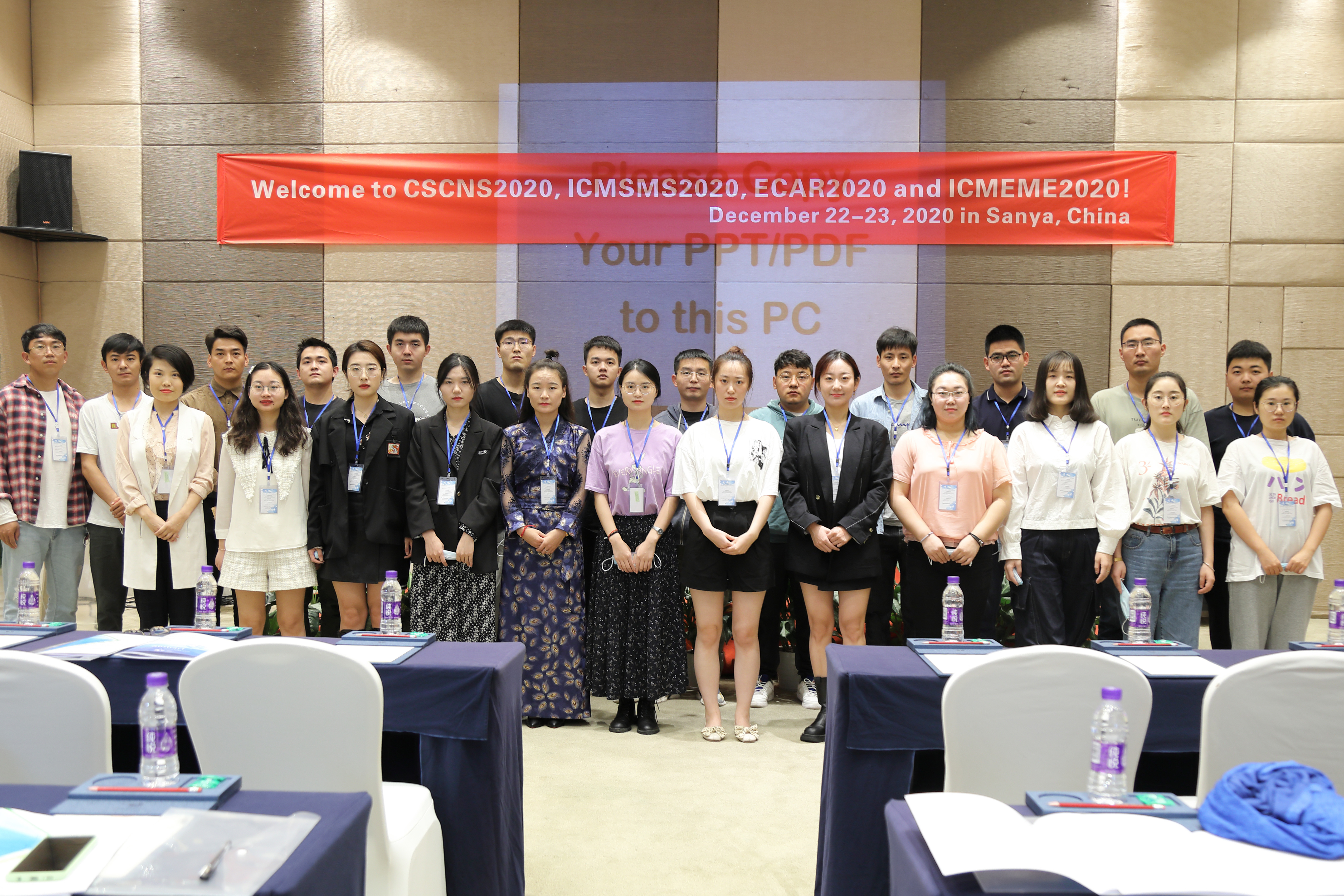 .
.
Conference Proceedings
(Open Access) CSCNS2020 papers were published in Volume 336 (2021) by EDP Sciences-MATEC Web of Conferences.
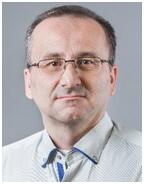 Speaker I: Prof. Zdenek KOLKA
Speaker I: Prof. Zdenek KOLKA
Brno University of Technology (BUT), Czech Republic
Zdeněk Kolka received the MSc degree in 1992 and the PhD degree in 1997, both in electrical engineering, from Brno University of Technology (BUT), Czech Republic. In 1995, he joined the Department of Radio Electronics, Brno University of Technology. His scientific activity is directed to the areas of general circuit theory, computer simulation of electronic systems and digital circuits. For years, he has been engaged in algorithms of the symbolic and numerical computer analysis of electronic circuits. He has published over 100 papers. At present, he is a professor at BUT in the field of radio electronics.
Speech Title: Algorithm for Estimating Error of Symbolic Simplification
Abstract: The paper deals with an improved algorithm for estimating errors during approximate symbolic analysis. A linear system can be solved symbolically. However, the size of the resulting formula grows exponentially with the matrix size. The approximate symbolic analysis omits insignificant terms of the exact formula to decrease its size, which, on the other hand, limits the validity of the approximate result. The proposed algorithm estimates, in a computationally feasible way, the approximation error over a region of system parameters. This makes it possible to maintain the validity of the results even if the tolerances of the system parameters are defined. The method is based on the first-order approximation of error functions. The algorithm is demonstrated using the SNAP symbolic analyzer, which has been developed by the authors.
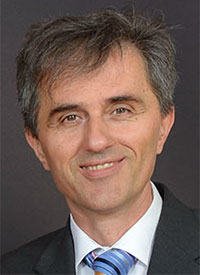 Speaker II: Dr. Ilija Barukčić
Speaker II: Dr. Ilija Barukčić
University of Hamburg, Germany
Dr. Ilija Barukčić. His basic field of research is the relationship between cause and effect under conditions of quantum and relativity theory, in biomedical sciences, in philosophy et cetera. He participated with contributions actively at many international conferences. He is the author of many books published since 11/1989.
Speech Title: The causal relationship k
Abstract: Abstract. Aim: A detailed and sophisticated analysis of causal relationships and chains of causation in medicine, life and other sciences by logically consistent statistical methods in the light of empirical data is still not a matter of daily routine for us. Methods: In this publication, the relationship between cause and evtect is characterized while using the tools of classical logic and probability theory. Results: Methods how to determine conditions are developed in detail. The causal relationship k has been derived mathematically from the axiom +1 = +1. Conclusion: Non-experimental and experimental data can be analysed by the methods presented for causal relationships.
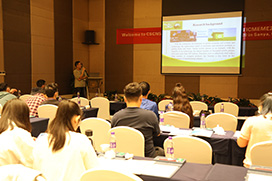 Speech Title: Research on sound absorption performance and optimal design of acoustic materials containing cavity structure
Speech Title: Research on sound absorption performance and optimal design of acoustic materials containing cavity structure
Dr. Hao Song, Systems Engineering Research Institute, China
Abstract. Based on the finite element method, this paper first discusses the sound absorption characteristics of acoustic materials with a cavity structure backed by air, and then takes the internal cavity of the acoustic material and the acoustic material as the research object, considering the sound waves of different frequencies and different incident angles. The maximum sound absorption coefficient is used as the objective function to optimize the design of the cavity acoustic material. The calculation results show that the sound absorption performance of the optimized acoustic material has been significantly improved.
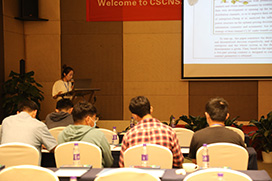 Speech Title: Noise simulation and low noise design of skinned panel structure of scientific experiment rack
Speech Title: Noise simulation and low noise design of skinned panel structure of scientific experiment rack
Dr. Changshuai Yu, Key Laboratory of Robotics, Shenyang Institute of Automation, Chinese Academy of Sciences, China
Abstract. The noise of the scientific experiment rack radiates into the space station through the skinned structure, which directly affects the safety and health of astronauts in orbit for a long time, so it is necessary to carry out low-noise design. Firstly, the finite element model of the panel structure is established, and the correctness of the model is verified by modal test. Secondly, select a point as the vibration excitation point on the finite element model of the plate structure to simulate the vibration input of the excitation source, obtain its vibration response through the modal superposition method, take the vibration response as the boundary condition of the acoustic boundary element, use the modal acoustic transfer vector technology to calculate the radiation noise of the plate structure, and verify it through the noise test in the half anechoic chamber. Then, the acoustic pressure contribution analysis of the radiated noise from the skinned panel structure is carried out, and the panel area which can reduce the radiated noise of the target is determined. The constrained damping layer is applied in this area. The results show that the radiated noise at the target position is significantly reduced.
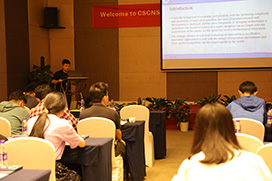 Speech Title: Steel logistics park layout based on market basket analysis and accessibility
Speech Title: Steel logistics park layout based on market basket analysis and accessibility
Dr. Qianqian Yang, Beijing Jiaotong University, China
Abstract. In this study, we used market basket analysis and land accessibility for the layout of MG Steel Logistics Park. Due to the unreasonable cargo space layout, the outbound trucks in the MG Steel Logistics Park detour and transfer, which caused congestion. Using market basket analysis, this research took outbound trucks as the research object to measure the degree of correlation between cargo locations. Then, we measured the convenience of cargo locations by the accessibility and matched it with the steel outbound frequency. We established a model and got the layout allocation plan with the maximum degree of relevance and the minimum difference in cargo-location matching as the target. In the solution algorithm, we use roulette method and the elite retention strategy to improve the genetic algorithm. Finally, we compared the results before and after optimization. We found that the number of truck transfers was reduced by 33%, and the truck staying time was reduced by 21%.
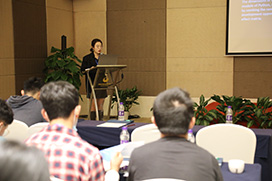 Speech Title: A scheduling and control integration optimization method for regenerative braking energy utilization
Speech Title: A scheduling and control integration optimization method for regenerative braking energy utilization
Dr. Shunyao Yang, Beijing Jiaotong University, China
Abstract. The utilization of regenerative braking energy is of great significance to the energy saving of subway. Therefore, this paper proposes an optimization method for scheduling and control integration, which not only adjusts the timetable but also optimizes the speed curves of trains. When there is a train braking, this method will try to find a train that accelerates to absorb the regenerative energy generated by the braking train. Firstly, this paper establishes the timetable energy saving optimization model, based on which the speed curves will be optimized. Furthermore, we design a scheduling optimization algorithm based on genetic algorithm, and optimizes speed curves of trains by binary search method to obtain a good solution. Finally, simulations are given using the real data of Beijing Metro Line 4 to evaluate the proposed method, and the results show that the integrated scheduling and control optimization method can reduce energy consumption by 15.18%. In the random disturbance simulations, the proposed method shows good robustness, which makes it possible to apply this method to the real subway operations.
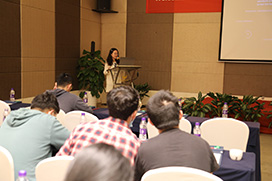 Speech Title: Research on attitude control strategy of single engine failure in the first-stage flight phase of new generation launch vehicle
Speech Title: Research on attitude control strategy of single engine failure in the first-stage flight phase of new generation launch vehicle
Dr. Guorui Liao, Xichang Satellite Launch Center, China
Abstract. The successful launching of the new generation of launch vehicle is of great practical significance to the development of China Space, and the cryogenic liquid engine commonly used in the launch vehicle has a certain probability of failures, which may affect the success or failure of rocket launching. In this paper, a Bolza problem optimization algorithm based on Radau pseudo-spectral method is proposed to solve the problem of single engine failure in the first-stage flight phase of the new generation launch vehicle by simulating fault injection and taking the attitude angle as optimal control quantity. The simulation results show that this method can effectively eliminate the influence of single engine failure on orbit injection accuracy, achieve the fault absorption of new generation launch vehicle engine, improve the fault tolerance of attitude control system, and further guarantee the system reliability.
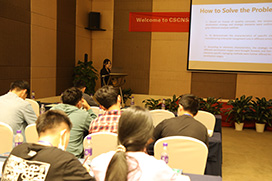 Speech Title:Study on 3D reconstruction techniques of rocket body model based on strain monitor
Speech Title:Study on 3D reconstruction techniques of rocket body model based on strain monitor
Dr. Aihua Chen, Jiuquan Satellite Launch Center, China
Abstract. A three-dimensional reconstruction technique based on strain monitoring is proposed in this paper. According to the strain data of finite measuring points, the shape characteristics of the whole rocket structure are reconstructed, which provides the basis for the reliability judgment of the structure. Based on the theory of Ko, the 3D reconstruction algorithm for the rocket model of cylindrical structure is realized. The strain nephogram of plate model is simulated by ANASYS. And the strain nephogram is reconstructed by reconstruction algorithm, then compared with the simulation results. The results show that the maximum error between the results of reconstruction and simulation is 1.91%, which indicated that the agreement is great.
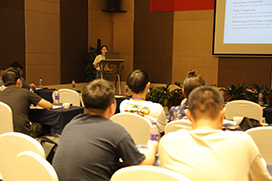 Speech Title: Numerical simulation of leakage flow field and acoustic characteristics for safety valve
Speech Title: Numerical simulation of leakage flow field and acoustic characteristics for safety valve
Dr. Minghui Hu, East China University of Science and Technology, China
Abstract. Aiming at the internal leakage problem of spring type nuclear safety valve at the sealing surface, the flow field and sound field characteristics at the leakage height of 0.5mm between the valve disc and the valve seat sealing surface were studied, and the numerical simulation was carried out based on large eddy simulation(LES) and mohring acoustic analogy method, and compare the effects of acoustic wall pressure fluctuation(AWPF) and turbulent wall pressure fluctuation(TWPF) as the excitation source on the external sound field of the valve. The simulation results show that: the change gradient of velocity field and pressure field at the leakage port of safety valve is significant and form vortices of different sizes. The small-scale vortices are mainly in the leakage port, while the large-scale vortices mainly exist in the flow channel; When the valve is leaking, the noise is mainly dominated by high-pressure injection noise, its spectrum curve shows wide-band characteristics, and the external noise of the valve is mainly caused by AWPF. The above research results can provide a theoretical basis for the safety valve online detection method.
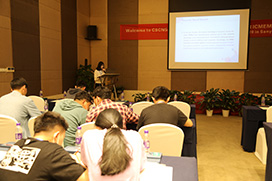 Speech Title: Modeling and verification of train departure scenario for next generation train control system
Speech Title: Modeling and verification of train departure scenario for next generation train control system
Dr. Lina Yang, Beijing Jiaotong University, China
Abstract. As a complex and safety-critical system, any failure in the Next Generation Train Control System (NGTC) departure scenario may cause serious personal injuries and property losses. It is very necessary to study NGTC scenario scheme and effective modeling and verification methods. This paper investigates the key technologies of the NGTC, optimizes the system structure and redistribution functions, and proposes the train control system scheme and typical operating scenarios. Firstly, the structure, equipment function and information interaction of NGTC are analyzed, and the operation scenarios of the system scheme are designed. This paper also uses UML language to describe the train departure scenario, and uses NuSMV modeling to verify accessibility and certainty of the scenario scheme. The results show that, the scheme proposed in this paper provides a reference for the design and implementation of the NGTC.
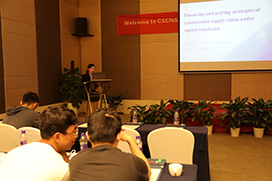 Speech Title: Technical study for complete one-time sealing of vacuum interrupter
Speech Title: Technical study for complete one-time sealing of vacuum interrupter
Dr. Congjun Xue, Tianjin Pinggao Intelligent Electric Co. Ltd., China
Abstract. This paper briefly describes the development process of sealing technology for vacuum interrupter, analyze the main characteristics of each stage and difficulties in realizing one-time sealing. Five design schemes are put forward to achieve complete one-time sealing, and the vacuum brazing tests were carried out according to the scheme. The test samples were dissected and analyzed, This article it contrastive analysis. The contact structure was chosen as the best structure for a complete one-time sealing, and made into a vacuum interrupter. The vacuum interrupter has passed the vacuum, the contact resistance, the power-frequency voltage-withstand test, BIL and the breaking test. It is proved that the one-time sealing of this structure can meet the requirements.
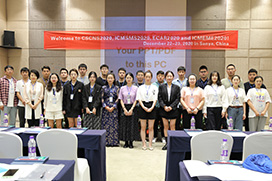 Speech Title: Finite element simulation study on influence of spacecraft stiffener structure on elastic wave propagation
Speech Title: Finite element simulation study on influence of spacecraft stiffener structure on elastic wave propagation
Dr. Biwan Tian, Tianjin University Renai College, China
Abstract. Aiming at the propagation process of elastic wave in spacecraft stiffener structure. In this paper, the phase and energy changes of elastic waves propagating in the wall structure of stiffeners at different frequencies are analyzed by using finite element method and laser Doppler vibrometer (LDVS). Meanwhile, the relationship between the parameters of stiffeners and the diffusion of acoustic wave energy and the phase change of elastic waves respectively is obtained. The results show that in the range of parameters involved in this paper, the stiffener has a significant effect on elastic waves propagation. When wavelength λ > 10mm, most of the elastic waves are reflected by the stiffener, while when λ < 6mm, elastic waves propagate more easily across the stiffener, and the proportion of those propagated by the stiffener increases. Moreover, the functional expression of the relationship between the height of the stiffener and the frequency of the elastic wave which can easily propagate through the stiffener is obtained.
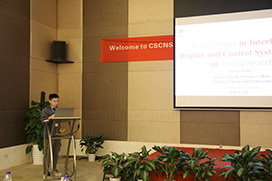 Speech Title: Research on path planning of multi-rotor UAV based on improved artificial potential field method
Speech Title: Research on path planning of multi-rotor UAV based on improved artificial potential field method
Dr. Zhengqing Liu, Nanjing University of Aeronautics and Astronautics, China
Abstract. To explore the design pattern and guidelines for the forms displayed on the interfaces, we studied the factors of form design from the perspective of ergonomics. These factors include orientation (horizontal, vertical), color grouping and color combination. In combination with the analysis and conclusion of the experimental data, we proposed some design guidelines for human-computer interface that has many forms, such as weapon command and control system. A visual searching program was designed to simulate the display interface. Reaction time and accuracy are recorded by orthogonal experiment. Analyses such as double factor variance analysis, simple main effect are conducted on the experimental data. The following conclusions are obtained: two-color form has a faster reaction time than single color form; reaction time of the horizontal form is shorter than the vertical form. Color combination has significant influence on accuracy, and the blue-green is suiTable for form design; color grouping has significant influence on reaction time and accuracy; the interaction of color grouping and color combination shows significant differences. When designing forms in display interface, we should choose the horizontal layout with sparse coloring density as much as possible, and the effect of color combination on the recognition efficiency should be considered.
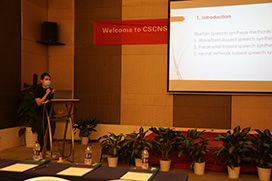 Speech Title:Multi-objective optimization of solar thermal photovoltaic hybrid power generation system based on NSGA-Ⅱ algorithm
Speech Title:Multi-objective optimization of solar thermal photovoltaic hybrid power generation system based on NSGA-Ⅱ algorithm
Dr. Liang Meng, Power Grid Technology Center, State Grid Hebei Electric Power Research Institute, China
Abstract. In this paper, NSGA-Ⅱ is used to realize the dual-objective optimization and three-objective optimization of the solar-thermal photovoltaic hybrid power generation system; Compared with the optimal solution set of three-objective optimization, optimization based on technical and economic evaluation indicators belongs to the category of multi-objective optimization. It can be considered that NSGA-Ⅱ is very suitable for multi-objective optimization of solar-thermal photovoltaic hybrid power generation system and other similar multi-objective optimization problems.
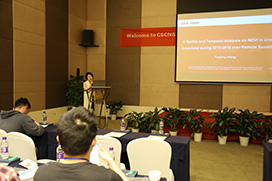 Speech Title: A joint design method of frame synchronization code and LDPC code
Speech Title: A joint design method of frame synchronization code and LDPC code
Dr. Peng Sun, Zhengzhou University, China
Abstract. Frame synchronization word (FSW) is an important basis in signal synchronization detection. In our work, the joint design of frame synchronization words and error correcting code are proposed which through regularly distributing the frame synchronization words among the information bits to improve the decoding performance of the LDPC. Frame synchronization word should be added to the information sequence corresponding to the position with the check matrix larger column weight which can guarantee that more Frame synchronization words are received by the check node in the decoding iteration. The frame synchronization word is known to the receiver which play an important role in decoding iteration. The results of simulation show that the algorithm makes an obvious improvement in decoding performance when the signal-noise ratio (SNR) is lower than 1 dB.
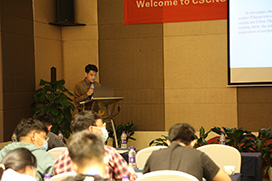 Speech Title: Optimizing and accelerating history matching progress of numerical reservoir simulation by using material balance analysis
Speech Title: Optimizing and accelerating history matching progress of numerical reservoir simulation by using material balance analysis
Dr. Yaozhong Yang, Information management center of Shengli Oilfield Company Ltd., China
Abstract. In view of the problem of huge computations and multiple solutions, a method for optimizing and accelerating the progress of history matching by using material balance analysis was established. Based on simple measuring data, such as average pressure, daily production rate and PVT test, a material balance model can be constructed for a three phase system of hydrocarbon reservoir. According to the material balance calculation, original oil in place and aquifer parameters can be obtained as optimized parameters for numerical simulation, which contributes to solve the multi-solutions problem of history matching. Besides, by conducting uncertainty analysis using Monte-Carlo simulation method, one can determine the adjustment range of input parameters, which helps the engineer definite a clear direction, reduce the number of computations and consequently accelerate the progress of history matching. The reliability of the proposed method was verified according to two examples.
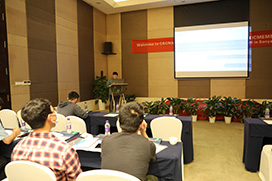 Speech Title: Optimization of one-dimensional wire cutting with variable length based on genetic ant colony algorithm
Speech Title: Optimization of one-dimensional wire cutting with variable length based on genetic ant colony algorithm
Dr. Xin Xia, Jiangxi Vocational Technical College of Industry & Trade, China
Abstract. This paper presents an algorithm of one-dimensional wire cutting based on genetic algorithm and ant colony algorithm. Firstly, the dominant solution is screened out by genetic algorithm and transformed into the initial accumulation of pheromone in ant colony algorithm, and then the ant colony algorithm is used to adjust the dominant solution of genetic algorithm to obtain the approximate optimal solution. The experimental results show that the convergence rate of the fusion algorithm is faster than that of the ant colony algorithm, and the utilization rate of raw materials is higher than that of genetic algorithm. In addition, the optimal parameters are obtained by adjusting the experimental parameters of the fusion algorithm.
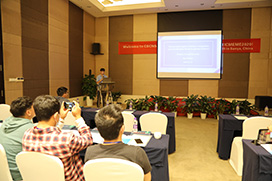 Speech Title: Controlling mechanical arms using 3D coordinates gotten from the AR technology
Speech Title: Controlling mechanical arms using 3D coordinates gotten from the AR technology
Dr. Cheng Cai, Shanghai Dianji University, China
Abstract. How to control the movement of the mechanical arm is a challenging topic recently. It requires much time and energy to program every joint. This paper proposes a new method based on 3D coordinates of the human arm joints, which helps the mechanical arm to imitate the movement of human arms and only needs to calculate angles of human arms’ joints according to the 3D coordinates. Here in this process the key is to get the information of 3D coordinates of human arms. This paper applies an AR(Augmented Reality) application of body detection with LiDAR on iPad Pro 2020 to get 3D coordinates. Then the calculated angle information is transferred from the host computer to the Arduino board controlling the movement of the mechanical arm. Eventually the same movements will be made by the mechanical arm and the human arm.
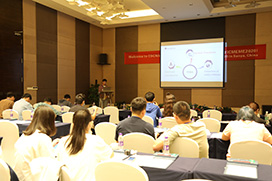 Speech Title: Design and application of electric power communication network comprehensive simulation training system
Speech Title: Design and application of electric power communication network comprehensive simulation training system
Dr. Lu Liu, Beijing Kedong Power System Control Co.,Ltd, China
Abstract. To solve the problem that current communication network training tools have limited functions and can’t effectively support the electric power communication network training, a new communication network comprehensive training simulation system is designed and implemented. This paper introduces the architecture of the system and function of each part. Then the simulation model principle is explained. The paper introduces the key technologies of 3D modeling, mechanism modeling, communication network scenario automatic generation and network fault simulation. Finally, the system application is introduced and the results show that the system builds a multi-functional training tool to meet the requirements of training and assessment for electric power communication network personnels.
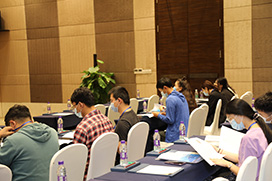 Speech Title: Design of emergency UAV network identity authentication protocol based on Beidou
Speech Title: Design of emergency UAV network identity authentication protocol based on Beidou
Dr. Donghao Zhao, Army Engineering University(Shijiazhuang Campus), China
Abstract. In view of the bad environment and intermittent communication of UAV network, based on the short message communication function of Beidou satellite navigation system, which can provide all-weather and no blind area communication service, a UAV network identity authentication protocol under emergency state when conventional means cannot communicate is designed.
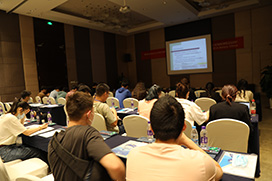 Speech Title: A gravity balancing assistant arm design in 3-D for rehabilitation of stroke patients
Speech Title: A gravity balancing assistant arm design in 3-D for rehabilitation of stroke patients
Dr. Fan Niu, Shanghai dianji university, China
Abstract.A gravity balancing assistant arm design in 3-D is a mechanical mechanism consisted of springs, rigid rods,joints and sliders, which can be modified to the geometry and inertia of the arm of stroke patients.This mechanism is designed without any controllers and motors, based solely on mechanical principles, to achieve a relative balance of gravitational potential energy and elastic potential energy, thereby reducing the burden on the arm of a stroke patient to facilitate rehabilitation.To achieve this function, first, the center of gravity of the patient’s arm will be positioned, and then the mounting position of the spring on the assistant arm will be determined.In this paper, the following objectives will be achieved: (i) the calculation of the gravitational potential energy and the elastic potential energy in the mechanism (ii) the simplification of the potential energy equation and the elimination of the coefficient of the items related to the angle. (iii) The comparison between 2-D and 3-D cases of the mechanism. (iv) The motion process of simulating the mechanism using MATLAB (v) Using MATLAB to create the energy plots (vi) Using SolidWorks to construct the prototype of the mechanism (vii) Describe the practical application and future extensions of this mechanism.
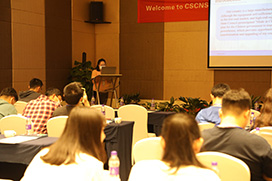 Speech Title: The switching principle of thyristor assistant arc extinguishing hybrid on-load tap-changer
Speech Title: The switching principle of thyristor assistant arc extinguishing hybrid on-load tap-changer
Dr. Pengfei Jia, China Electric Power Research Institute, High Voltage Research, China
Abstract. Thyristor assistant arc extinguishing hybrid on-load tap-changer uses thyristor auxiliary mechanical switch which combines the advantages of mechanical switch and thyristor switch. The hybrid OLTC has high reliability, a relatively small amount of work needs to be maintained. It is a kind of very promising transformer OLTC. This project focus on the application of the hybrid OLTC in 110, 220kV transformer, introduces the auxiliary thyristor arc hybrid on-load tap-changer principle of passive trigger with odd block switch to even block as an example, describes the hybrid on-load tap-changer switching process, and the switching principle of simulation verification, on the basis of summarizing the characteristics of hybrid on-load tap-changer.
 CSCNS2021
CSCNS2021






